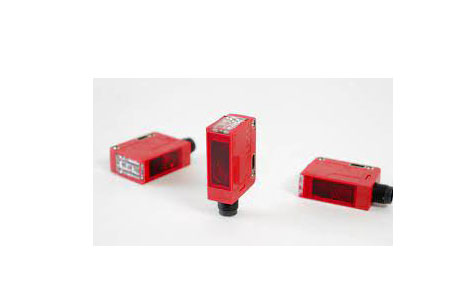Key Takeaway
An Omron photoelectric sensor detects objects by sending out light and sensing if it’s reflected or interrupted. It’s used to identify the presence, absence, or distance of an object in various industrial applications. This simple detection system makes automation processes smoother and more efficient.
Omron offers different types of sensors, such as diffuse-reflective, retro-reflective, and through-beam, each designed for specific tasks. These sensors are reliable, easy to install, and work well in different environments, making them a go-to choice for industries that need precision and reliability.
Overview of Omron’s Photoelectric Sensor Technology
Omron’s photoelectric sensor technology is built with precision and durability in mind. They use different sensing methods such as diffuse, retro-reflective, and through-beam, each suited for specific tasks. For instance, in through-beam, a light emitter and receiver work together across a distance, detecting when an object blocks the beam. This versatility allows Omron sensors to adapt to varied environments, from manufacturing lines to packaging industries.
What sets Omron’s sensors apart is their ability to function flawlessly even in harsh industrial conditions, such as dusty or oily settings. Their advanced optics and durable design ensure long-term reliability, which is a must in critical operations.

Key Features of Omron Photoelectric Sensors
Omron photoelectric sensors are known for their compact design, which allows them to fit into tight spaces without compromising performance. In many industrial setups, space is a premium, and the ability to incorporate powerful sensors in compact machinery is invaluable. These sensors are versatile enough to be integrated into various applications, from assembly lines to robotic systems. Whether the production line is crowded or requires precision placement, Omron’s sensors excel in environments where every millimeter counts.
But what really sets these sensors apart is their adjustable sensitivity. They can detect objects of varying shapes, sizes, and materials—whether transparent bottles in a beverage plant or matte components in an automotive assembly. This adaptability ensures smooth operation, reducing the need for manual intervention and minimizing errors.
Common Applications for Omron Photoelectric Sensors in Industry
Speed is everything in high-volume industries, and Omron’s photoelectric sensors are built to keep up. With a high-speed response time, these sensors detect even the smallest changes in milliseconds. In environments like packaging plants or automotive lines, where thousands of items pass through each minute, this quick detection is vital. It ensures that no part of the production line is slowed down, maintaining efficiency and reducing the risk of bottlenecks.
Moreover, their immunity to external light and electrical noise adds to their reliability. This feature is crucial in complex manufacturing environments, where interference could easily throw off less robust sensors. Omron’s photoelectric sensors, however, continue operating flawlessly, ensuring uninterrupted workflow even in demanding conditions.
Why Choose Omron for Photoelectric Sensors?
Omron photoelectric sensors play an integral role across various industries, making them indispensable in settings like food and beverage production, automotive assembly, and warehousing. For example, in food production, these sensors ensure that bottles are accurately filled, caps are tightly secured, and packages are sealed with precision. In automotive plants, they detect the exact positioning of parts, ensuring that vehicles are assembled with high precision.
In warehousing, Omron’s sensors help keep operations smooth by monitoring conveyor belts. They quickly detect misplaced items or potential jams, preventing downtime and ensuring a consistent flow of goods. Their reliability in such diverse applications makes them a trusted choice for businesses looking to maintain high standards of quality control.
How Omron’s Sensors Compare to Other Brands
While some brands offer cheaper alternatives, Omron sensors stand out for their durability and long-term cost-effectiveness. Their rugged construction ensures that they last longer, even in harsh environments where other sensors might fail. Industrial experts often favor Omron for this reason—the peace of mind that comes with using sensors that are built to last, reducing the need for frequent replacements or maintenance.
Other brands may cut corners on quality, leading to sensors that wear out quickly or struggle with detection accuracy in challenging conditions. Omron, however, invests in ensuring their products are optimized for industrial environments, making them a global leader in sensor technology. The result is a product that not only performs better but also saves companies time and money in the long run.
Conclusion
In industrial automation, precision, reliability, and adaptability are essential, and Omron photoelectric sensors excel in all these areas. They are more than just sensors—they’re solutions designed to enhance productivity, ensure quality control, and reduce operational costs. Whether you’re in manufacturing, automotive, or packaging, Omron offers the expertise and innovation necessary to keep your operations running smoothly.
Investing in Omron means investing in long-term efficiency, reduced downtime, and the assurance that you’re using some of the best sensors available in the market today.
